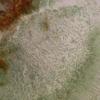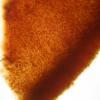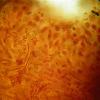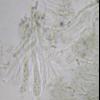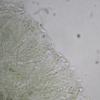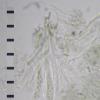
15-12-2025 15:48
 Danny Newman
Danny Newman
Melanospora cf. lagenaria on old, rotting, fallen

15-12-2025 15:54
 Johan Boonefaes
Johan Boonefaes
Unknown anamorph found on the ground in coastal sa

15-12-2025 21:11
 Hardware Tony
Hardware Tony
Small clavate hairs, negative croziers and IKI bb

15-12-2025 07:09
 Danny Newman
Danny Newman
indet. Rutstroemiaceae sp. on unk. fallen leavesMc

15-12-2025 07:05
 Danny Newman
Danny Newman
Pseudosclerococcum golindoi (det: Zotto)near Cosb

15-12-2025 11:49
 Danny Newman
Danny Newman
ITS sequences from the following two collections B

15-12-2025 12:34
 Danny Newman
Danny Newman
indet. Rhytismataceae on oak leafnear Purchase Roa

09-12-2025 12:06
 Andgelo Mombert
Andgelo Mombert
Bonjour,Je recherche l'article concernant Hypobryo
Here's already my next problem:
Substrate: (Yet) Unidentified deciduous wood
Macro: Apothecia, up to 0.5 mm diam. (as single apothecia), exceeding 1 mm in confluent parts. Densely aggregated and often more or less coalescing to confluent parts. Black, with a distinct margin when young, then flat without margin and later convex. Exuding as a red-brown colour in KOH.
Micro: The whole disc is incrusted with a brown substance and structures are difficult to see when prepared in water. This Substance dissolves in KOH as a reddish exsudate and then the structures are hyaline to distinctly green. Asci 35-40 x 5 µm, IKI-, Melzer-, Spores hyaline, 4.5-5.5 x 1.2-1.6 µm, with two oildrops, aseptate. Paraphyses about 1 µm diameter. Excipulum not clearly differentiated from medulla, the medulla consisting of gelatinous tissue with loosely intertwined, irregularly expanded hyphae (Photos).
Thank you for any help
Stefan

Ist was Durelloides.

danke, das hilft! Vergleiche mal meine Zeichnungen im Verzeichnis Phaeangella = Durella redbrown, und da "bigutt spores narrow ionom". Da sind zwei Funde, einer aus USA, der andere aus Luxemburg. Die wuchsen aber an ansitzenden Ästen.
Hast du keine Skala in deinen Fotos? Dann könnte ich etwas nachmessen.
Das Auflösen und Austreten des rotbraunen Pigments ist typisch für diese Art (ionomidotisch). Irgendwie erinnert er auch an Ionomitodis fulvotingens, aber nur mikroskopisch inklusive Excipulum.
Grüße
Zotto

Asci tot 45 x 4.5-5.5 µm,
Sporen etwa 4,5-5,5 x 1,8-2 µm
